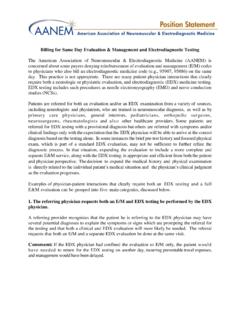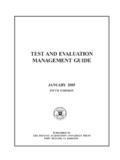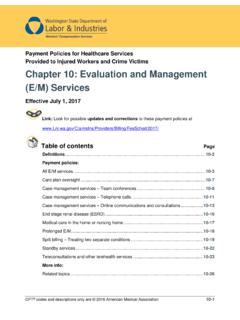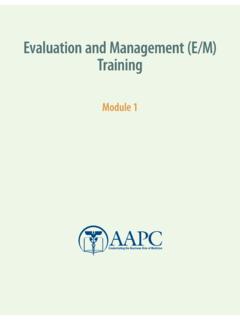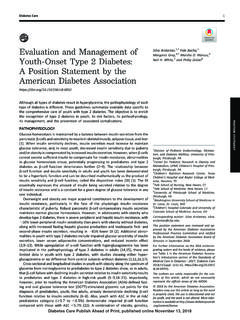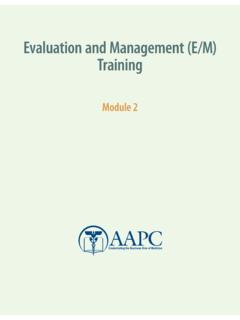Transcription of Project Evaluation Guidelines - NYU
1 21 Project Evaluation GuidelinesProject EvaluationGuidelinesQueensland TreasuryFebruary 1997 For further information, please contact:Budget DivisionQueensland TreasuryExecutive Building100 George StreetBrisbane Qld 4000or telephone (07) 3224 5712 Contents1. Introduction ..12. What is Project Evaluation ? ..23. The purpose of Project Evaluation ..34. Which projects should be evaluated? ..45. Costs and timing ..56. How does Project Evaluation link to strategic plans and the budget process? .. 67. The Project Evaluation process .. Define the objectives and scope of the Project .. Identify and select suitable options .. Carry out the Project analysis .. Economic analysis .. Social analysis .. Environmental analysis .. Budget Select the preferred option .. 178. The Project Evaluation Post implementation review .. 1910. Reference material ..201 Project Evaluation Guidelines1.
2 IntroductionThese Guidelines outline the rationale, processes and requirements forthe Evaluation of capital projects in the Queensland Public Sector. Projectevaluations of major capital projects are required under the PublicFinance Standard for Asset Management (Sect. 346-7, July 1995), andform part of the procedures associated with the State s Capital Guidelines will assist agencies to evaluate Project options in aconsistent and comprehensive manner, and to prioritise competingprojects. At a whole of government level they provide a uniformframework for the Evaluation of capital projects in the context of theState strategic planning Owned Corporations are not subject to these Guidelines astheir investment Evaluation criteria are established by shareholdingministers; commercialised entities within departments would placegreater emphasis on financial aspects of the Guidelines cover the key principles to be applied in the evaluationof capital projects, but, consistent with these principles, individualagencies are encouraged to develop their own Evaluation manuals toaddress the particular issues and concerns relevant to each focus of these Guidelines is primarily on what is required for a projectevaluation rather than on detailed descriptions of long establishedtechniques, such as cost benefit analysis, for which there is already awide range of literature available (see references at the end of theseguidelines).
3 2 Project Evaluation Guidelines2. What is Project Evaluation ? Project Evaluation is a methodology for assessing the economic, social,environmental and financial impact of proposed capital projects. All theimpacts associated with a capital Project are identified and, wherepossible, costs and benefits valued in monetary terms, so that the projectsselected by government will provide the maximum net benefit to analysis assesses the net worth of a Project for the economy. Itis usually the major element of a Project Evaluation because it providesa means to rank projects in terms of the efficient allocation of provides an initial default ranking for projects which may then bemodified by analyses of the social, environmental and budgetary issuesassociated with these projects. For these reasons, economic analysis isdiscussed in greater detail in these Guidelines than the other and environmental analyses assess the effect of the Project on socialgroups, employment, regional development, etc.
4 And on naturalecosystems, pollution, heritage, rare species etc. respectively. They alsoidentify ways to deal with these issues. The extent to which these analysesform part of a Project Evaluation depends on the importance of theseissues for a particular fourth element in Project Evaluation , budget analysis, providesdecision-makers with information on cashflows, borrowings, fundingsources, etc. in order to assess the budgetary implications of the is required for all projects which impact on the State various analyses are then considered together, the options rankedand a preferred option evaluationassesses the economic,social, environmental andfinancial impacts of aproject and combinesthese to provide anoverall assessment of Evaluation Guidelines3. The purpose of Project evaluationThe purposes of Project Evaluation are to improve the quality of services,to ensure value for money, and to prioritise proposed capital is achieved through a structured process which makes it possibleto: clearly define Project objectives, and consider a wide range of optionsto meet these objectives; link the Project to the strategic objectives of the government, the StateCapital Works Program and an agency s physical asset strategic plan; carry out economic, social, environmental and budgetary analysesof the Project ; and identify the net benefit of the Project to the community, and the effecton the State evaluations assist departments to make decisions on proposedcapital projects.
5 They provide the means to assess the viability ofproposed capital projects, and to rank competing projects in thedepartment s annual capital works evaluations also facilitate deliberations by the Cabinet BudgetCommittee during the Budget process. They assist in the selection ofprojects to be included in the State Capital Works Evaluation Guidelines4. Which projects should be evaluated?All capital projects, including fixed capital expenditure, plant andequipment, and capital grants and subsidies, should be subject toevaluation, commensurate with the level of investment, to provide thenecessary information to decision-makers. There are also formalreporting requirements for capital projects greater than $1 the Public Finance Standard for Asset Management (Section 347),accountable officers are to provide the Treasurer with evaluations ofphysical asset investments if the investment is estimated to be more than:(a) $5 million and is to be funded from the department s capital base; or(b) $1 million and;(i) is to be funded from specific budget funding; or(ii) the Treasurer has asked for the capital projects should be evaluated irrespective of whether they arefunded through the State Budget or from other sources (for example, anorganisation s own revenues, borrowings, Commonwealth funding etc.)
6 It is the expected value of a Project to the community which is beingevaluated, not the source of should also be undertaken in respect of any substantialcapital projects and expenditures for which individual ministers; ororganisations may have discretion and can commit without reference the Public FinanceStandards, there areformal reportingrequirements forevaluations of capitalprojects over $1 Evaluation Guidelines5. Costs and timingCostsThe resources devoted to each Evaluation should be commensurate withthe size and importance of expenditure a major purpose of Project Evaluation is to improve value for money,the cost of Project Evaluation must be balanced against the benefits ofimproved decision making. The resources allocated to a projectevaluation should be the minimum necessary to inform decision-makersadequately of the worth and impact of the clients and stakeholders ( departmental management, Treasury)should be consulted on a periodic basis to ensure the evaluations arerelevant to client needs and to avoid unnecessary costs and view of the substantial financial implications of the capital worksprogram, it is essential that information on the viability of proposedcapital projects is available to Treasury and the Cabinet BudgetCommittee in the development of the State evaluations for major capital projects, to be funded from adepartment s capital base and to commence in the next financial year,should be completed by the start of the annual Budget process.
7 Theevaluations should be completed sufficiently in advance of the Budgetprocess to allow the necessary time for review. This applies especiallywhere there are contentious , only short-form evaluations are required for new capitalinitiatives. Projects which the Cabinet Budget Committee determinesmerit further consideration will require a full Evaluation to beundertaken. These will be then considered by the committee later in theBudget detailed information on the Budget process itself is outlined in theTreasury Budget Manual. The Budget Division of Treasury can providethe specific dates for the budget process for a particular resources devoted toan Evaluation of a capitalproject should becommensurate with thevalue and importance ofthe contact should bemade with the BudgetDivision of Treasury, toallow adequateconsideration of theproject in the Budgetprocess, particularlywhere the evaluationsinvolve contentiousissues or where advice isrequired on Evaluation Guidelines6.
8 How does Project Evaluation link tostrategic plans and the budget process?The Evaluation of capital projects is a key element of a department sfinancial and service delivery planning, and in the development of theState s Capital Works Program. Project evaluations are used to optimiseservice delivery strategies and resource utilisation within a department,and to do so from a whole of government asset planning, Project Evaluation and budgeting are the keyelements in determining what assets are needed, which provide the bestvalue for money, and which can and should be these three elements have been presented sequentially, theyrepresent an ongoing process which is interlinked and example, the results of Project evaluations could be expected tomodify both physical asset planning and Budget that these three elements are linked effectively is important inbeing able to provide the right infrastructure at the right price and at theright time.
9 These linkages are illustrated in diagram achieve this linkage, service delivery strategies and the assetsnecessary to support them should be identified in a department scorporate plan and its physical asset strategic plan. Information on thisaspect of the process is contained in Treasury s Physical Asset StrategicPlanning line with this overall strategic direction, Project proposals are selectedand then evaluated in order to prioritise them, and to decide whether toinclude them in the department s proposed capital program. Proposalsare then considered in the Budget context and, based on which proposalsare approved, the departmental and the State capital programs Project Evaluation Guidelines are designed to assist in the evaluationand prioritisation part of the Evaluation Guidelines Diagram 1 Strategic Planning, Project Evaluation and the Budget ProcessState Strategic Direction(link to overall government strategic policy and direction)Corporate Strategic Plan(analysis of issues and strategies including major asset strategies)Physical Asset Strategic Plan(analysis of asset issues and strategies including major asset needs) Project Evaluation (scan and preliminary analysis of all options, detailed analyses ofselected options, rank and select preferred option) Project Approval( Cabinet Budget Committee, departmental management) Project Implementation8 Project Evaluation Guidelines7.
10 The Project Evaluation processThe Project Evaluation process involves the identification of servicedelivery needs, the listing of options (including a do nothing option),the gathering of relevant data on these options, detailed analyses of theoptions, and the selection of a preferred process is shown in diagram Define the objectives and scope of the projectThe services to be provided by the Project must be assessed and identifiedin order to clarify the purpose of the Project . This purpose can beexpressed as an outcome ( better recreational access), and as an output ( build a new road). These outcomes and outputs shouldderive from the organisation s corporate and physical asset strategicplans. Any capital proposal should explicitly identify its contribution toa department s service delivery identification of service needs should also be linked to overallgovernment objectives as spelt out in the State strategic planningprocesses, and in agreed regional determining the scope of a capital proposal, consideration should begiven to determining what constitutes a discrete Project , avoidexcessive aggregation or excessive dis-aggregation of capital workscomponents, and consider the impact on other projects or Identify and select suitable optionsAll realistic options should be identified at the early stage in the planningprocess, including a realistic base case option of do nothing or dowithout , maintaining the status quo.










